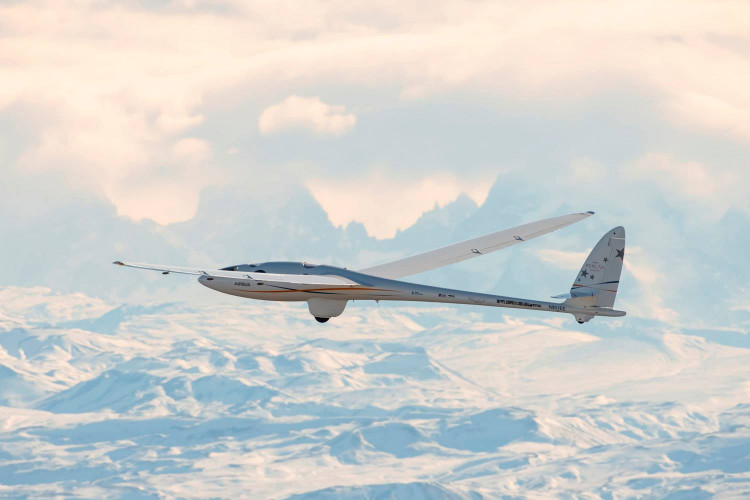Airbus Perlan Mission II soared to the edge of space, in the stratosphere to a pressure altitude of 76, 124 feet on Sept. 2. The achievement broke a new world altitude record for a glider that managed to passed the Armstrong line or the point in the atmosphere where human's blood can boil if an aircraft loses pressurization.
The Perlan 2 glider, which flew over El Calafate, Argentina, is designed to soar up to 90,000 feet. In comparison, the record holder for the level flight of a manned airplane belongs to the SR-71 Blackbird that managed to fly at 85,069 feet.
While the Perlan has yet to surpass the achievement of the Blackbird, Sunday's flight by pilots Jim Payne and Tim Gardner have exceeded the maximum recorded altitude in level flight of the U.S. Air Force's U-2 Dragon Lady reconnaissance aircraft which flew at 73,737 feet in April 1989.
The Perlan 2 is an engineless aircraft that only weighs 1,500 pounds. It is specially designed to ride out the stratospheric air currents created by the interaction of mountain winds with the polar vortex or the upper-level low-pressure area lying near the Earth's poles. This atmospheric quality, which is extremely important for Perlan II to fly to the edge of space, happens only for a limited time each year in selected locations.
The Andes Mountains in El Calafate, Argentina is one among those rare locations where the rising air currents are interacting with the polar vortex. The air currents in the region could reach more than 100,000 feet.
The Perlan has actually set world altitude record thrice within just eight consecutive days this year. Prior to the Sept. 2 flight, the aircraft, piloted by Jim Payne and Miguel Iturmendi, soared to 65,600 feet on Aug. 28.
On Aug. 26, the Perlan, piloted by Jim Payne and Morgan Sandercock soared to 63,100 feet. This exceeded the record set by Airbus Perlan Mission II in September of 2017 at 54,000 feet.
This year, the mission has for the first time used a special high-altitude tow plane instead of the previously used glider tow plane - the Grob Egrett G520 turboprop. The high-altitude reconnaissance turboprop plane towed the Perlan 2 to the base of the stratosphere during its Aug. 28 flight.
The Perlan Mission will continue to break records after these achievements. In fact, aside from flying, it will conduct research in the stratosphere through the middle of September. Information gathered through the mission will be integral to the study of high-altitude aerodynamics, aviation safety, and humans' exploration of Mars.






